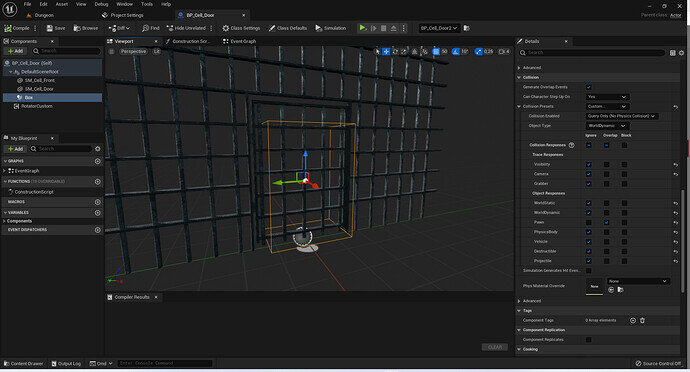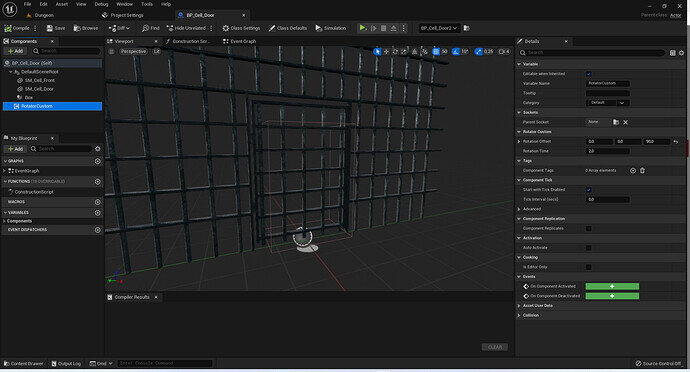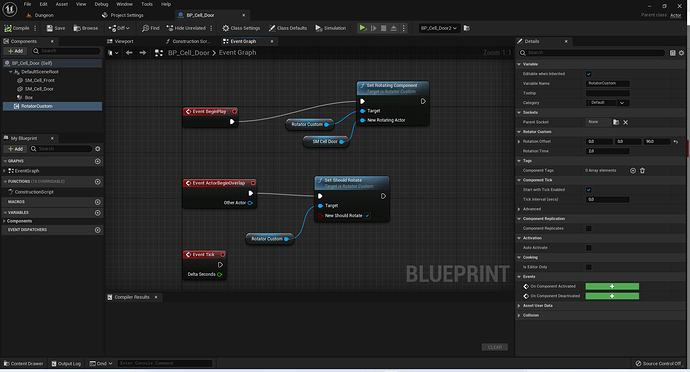As of now, I prefer to continue the course instead of spending time on the CryptRaider level. However, I still wanted to share my door rotation implementation in the hope of some feedback. If there is a much better or simpler solution, please let me know. 
Apart from that, I decided not to disable physics when attaching the triggering actor and to remove the directional / sky lighting due to the tedious light bleed workaround.
Here are the code and some screenshots showing the cell door, which works analogously to the other doors:
RotatorCustom.cpp
#include "RotatorCustom.h"
#include "Math/UnrealMathUtility.h"
URotatorCustom::URotatorCustom()
{
PrimaryComponentTick.bCanEverTick = true;
}
void URotatorCustom::BeginPlay()
{
Super::BeginPlay();
if(!RotatingComponent)
{
return;
}
StartRotation = RotatingComponent->GetRelativeRotation();
}
void URotatorCustom::TickComponent(float DeltaTime, ELevelTick TickType, FActorComponentTickFunction* ThisTickFunction)
{
Super::TickComponent(DeltaTime, TickType, ThisTickFunction);
if(!RotatingComponent)
{
return;
}
FRotator CurrentRotation = RotatingComponent->GetRelativeRotation();
FRotator TargetRotation = StartRotation;
float InterpSpeed = RotationOffset.Euler().Length() / RotationTime;
if(ShouldRotate)
{
TargetRotation = StartRotation + RotationOffset;
}
FRotator NewRotation = FMath::RInterpConstantTo(CurrentRotation, TargetRotation, DeltaTime, InterpSpeed);
RotatingComponent->SetRelativeRotation(NewRotation);
}
void URotatorCustom::SetShouldRotate(bool NewShouldRotate)
{
ShouldRotate = NewShouldRotate;
}
void URotatorCustom::SetRotatingComponent(UStaticMeshComponent* NewRotatingComponent)
{
RotatingComponent = NewRotatingComponent;
if(!RotatingComponent)
{
UE_LOG(LogTemp, Error, TEXT("%s: RotatingComponent nullptr"), *GetName());
return;
}
StartRotation = RotatingComponent->GetRelativeRotation();
}
Thanks for taking a look! 




